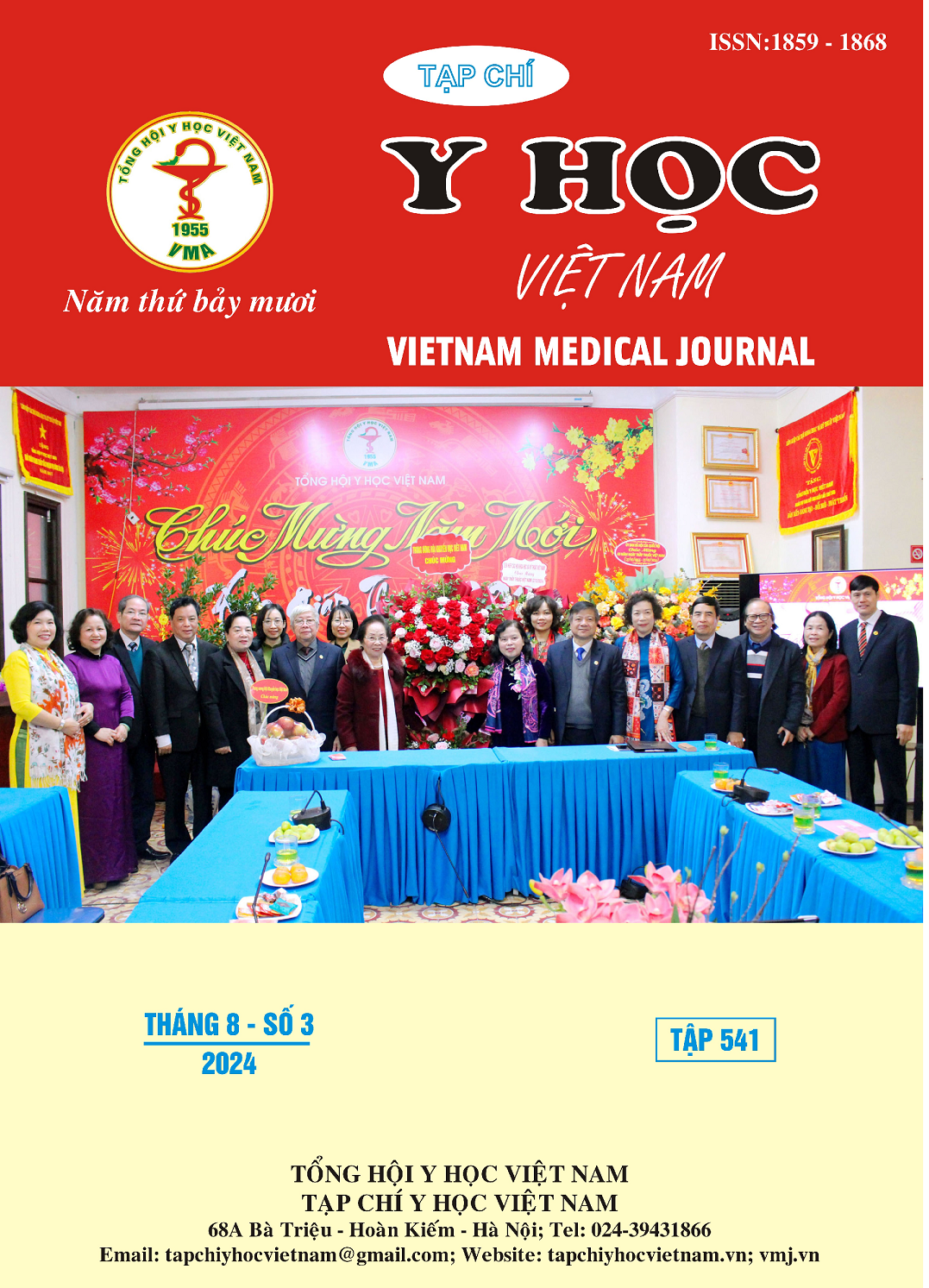FACTORS RELATED TO NEUROLOGIC RECOVERY IN ISCHEMIC STROKE PATIENTS BY HYPERBARIC OXYGEN THERAPY
Main Article Content
Abstract
Objectives: To study the factors related to the outcome of neurological rehabilitation for patients with ischemic stroke by hyperbaric oxygen therapy. Patients and methodology: controlled intervention study on 51 patients, divided in two intervention groups and control group being treated at Hanoi Rehabilitation Hospital from July, 2020 to September, 2021. The patient received rehabilitation cognitive exercises during 1 month at the hospital. Evaluation after 1 month treatment. Results: The common age is 60 - 69, accounting for 39,2%, the mean age is 63,1. The male/female ratio is 2,92. Most of the patients' occupations are manual workers with 64.7%, the rest are mental workers. The level of independence in daily living according to the Barthel scale improved from 9 patients who were completely dependent (36%) at admission to 0 patients (0%) in the intervention group and 6 patients (23,1%) at admission decreased to 2 patient (7,7%) in the control group. The proportion of independent patients from 0 patients (0%) at admission increased to 7 independent patients (28%) and 4 completely independent patients (16%) in the intervention group. intervention and 0 independent patients (0%) at admission increased to 5 patients (19,2%) in the control group (p<0.05). There is an association with the results of neurological rehabilitation with the time before and after 1 month of intervention (p < 0.05). However, there is no difference between age and occupation (p > 0.05). Conclusion: There is a positive improvement in the group of patients who are receiving hyperbaric oxygen therapy in patients with ischemic stroke. Hospital admission time is related to patient recovery outcomes. However, there is no difference between age and occupation.
Article Details
Keywords
factors related, ischemic stroke, rehabilitation, hyperbaric oxygen therapy.
References
2. WHO. Disease Burden and Mortality Estimates. WHO 2020. Accessed November 9.
3. Bộ Y tế. Báo cáo chung Tổng quan nghành y tế năm 2013, Tăng cường dự phòng và kiểm soát bệnh không lây nhiễm. Hà Nội. In: 2014.
4. Chopp M và Li Y (2012). Kích thích tính mềm dẻo và sự hồi phục chức năng sau đột quỵ - Liệu pháp Dược lý và Liệu pháp tế bào. Tạp chí Y Dược Lâm sàng 108, 7, 5-9.
5. Kwakkel G, Veerbeek JM, Harmeling-van der Wel BC, van Wegen E, Kollen BJ, Early Prediction of functional Outcome after Stroke (EPOS) Investigators. Diagnostic accuracy of the Barthel Index for measuring activities of daily living outcome after ischemic hemispheric stroke: does early poststroke timing of assessment matter? Stroke. 2011;42(2):342-346. doi:10. 1161/STROKEAHA.110.599035
6. Chen C-Y, Wu R-W, Tsai N-W, et al. Increased circulating endothelial progenitor cells and improved short-term outcomes in acute non-cardioembolic stroke after hyperbaric oxygen therapy. J Transl Med. 2018;16(1):255. doi:10. 1186/s12967-018-1629-x
7. Rusyniak DE, Kirk MA, May JD, et al. Hyperbaric oxygen therapy in acute ischemic stroke: results of the Hyperbaric Oxygen in Acute Ischemic Stroke Trial Pilot Study. Stroke. 2003;34(2): 571-574. doi:10.1161/01.str. 0000050644.48393.d0
8. Trần Văn Chương. Phục hồi chức năng bệnh nhân liệt nửa người do tai biến mạch máu não, Nhà xuất bản Y học Hà Nội. Published online 2010
9. Vũ Hùng Vương. Đánh giá kết quả phục hồi chức năng vận động sớm cho bệnh nhân tai biến nhồi máu não, luận văn bác sỹ chuyên khoa cấp II. Published online 2018
10. Laloux P, Galanti L, Jamart J. Lipids in ischemic stroke subtypes. Acta Neurol Belg. 2004;104(1):13-19


